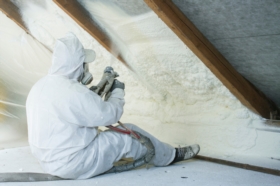




Even the most beautiful facade is not immune to algae and fungi. Moisture promotes their proliferation and dirties the building. But how does this happen? Is it only premature aging of the facade, or will the damage be considerable in the longer term? Is there a solution to prevent this? You will finally have answers to your questions.
Although all visible algae and molds have been removed on the surface, they still remain in depth and in the thickness of the walls. Indeed, over time, fungi and microscopic algae have become embedded in the heart of the materials and have developed through the presence of moisture. These micro-organisms are invisible on the surface and it is impossible to eradicate them with a simple facade cleaning.
To clean the walls in depth, only one treatment will eliminate the microorganisms that nestle deep in the materials.
The moisture generated by the condensation provides a nutritious soil that becomes an ideal environment for the development of fungi and algae. This humid environment accelerates the appearance of greenish and rust-colored spots on your facade.
It is not only unpleasant to have a dirty facade, but in the long run the damage will be significant. The organic carpet secretes small amounts of acid through its own energy production, which will have a long-term corrosive effect. The plaster is then moistened and this will eventually make it more porous. The absorption of particles and pollutants is favored, which will cause pronounced discoloration. Early cleaning will help protect your facade against algae and fungus infestations.
Cleaning the walls on the surface is good, but that is not enough to effectively protect against the return of new plants and new molds. To remedy this, you can rely on infallible architectural and technical measures by applying in-depth treatment to preventative action.
This treatment is more than just a facade cleaning, because it acts preventively over time. By eliminating all the micro-organisms encrusted, you protect your home by avoiding the reappearance of new algae.
"Clean your facade rather than repaint it"
In 90% of cases, the appearance of algae on your facades is the result of an omnipresent pollution. "Algae can grow wherever there is moisture. In addition to this, mushrooms need organic carbon, "says Paul Raschle, a biologist and former researcher at Empa.
The risk of colonization by algae and fungi decreases with altitude because the condensation decreases. On the other hand, it increases in valleys and areas prone to fog. It is therefore imperative to stop their progress by dealing quickly, so that they do not spread over your entire facade.
Maintaining one's facade is a primordial element; indeed it is more aesthetic to have a house with a neat front rather than the other way around. If the treatment of your facade is done at an early stage, the algae will not have time to become embedded and this will avoid repainting your house.